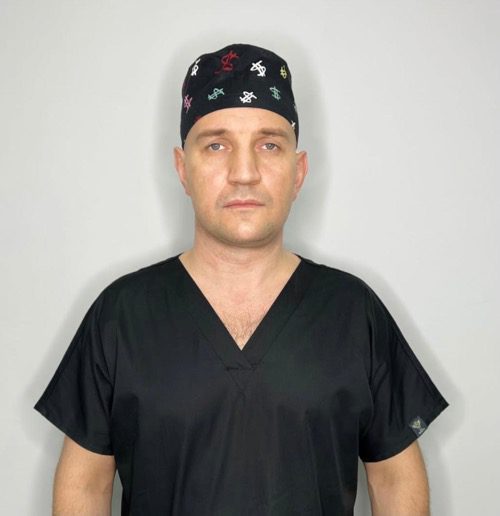What is DNA and its structure?
Let’s talk about something most of us have heard of but never fully understood: what DNA is. Have you ever wondered what makes you exactly you? I’m talking about the blueprint for life that is stored in almost every cell in your body. It’s DNA!

Imagine waking up one day and finding out that 99.9% of your DNA belongs to the person next to you, but it’s that 0.1% that makes you unique. Wouldn’t that be amazing? It’s not just about what color your eyes are or how tall you are. DNA is like a personal history book written in a secret code. It tells stories about our ancestors, reveals the secrets of heredity, and even helps solve crimes. If, like me, you’re curious about the significance these tiny strands have on history, technology, and even your everyday life, you’re in for a fascinating treat. In this article, we take a look at ten fascinating facts about DNA that will leave you in awe.
In 1953, the discovery of the double helix structure of DNA was a breakthrough. James Watson and Francis Crick’s iconic model, which they built with cardboard and wire, showed that DNA resembled a twisted ladder. This elegant structure consists of two strands that wrap around each other and are connected by nitrogenous base pairs. It’s fascinating to think that such a simple form underlies the complexity of life itself. Fun fact: Rosalind Franklin’s X-rays played a crucial role in this discovery, although she did not receive the recognition she deserved at the time.

What is DNA composition
DNA is made up of four key building blocks known as nucleotide bases. These are adenine (A), thymine (T), cytosine (C), and guanine (G). Think of them as the alphabet of life. Each base is paired with another, with adenine always paired with thymine and cytosine with guanine. It is this specific pairing that allows DNA to form the legendary double helix structure. Like the letters in a word, the sequence of these bases determines everything about the genetic makeup of an organism. It is amazing how these four simple molecules can create the complex life we see around us!
Genetic code
Every time I think about the genetic code, I feel like I am pondering some secret recipe written in ancient script. This code consists of sequences of four nitrogenous bases: adenine (A), thymine (T), cytosine (C), and guanine (G). These bases join together in a specific way, A to T and C to G, creating the rungs of the DNA ladder. The order of these base pairs encodes the instructions for making proteins, which are necessary for almost all of life’s functions. Imagine a long string of letters that, read in groups of three (called codons), tell the cellular machinery which amino acid to add next to the protein chain. It’s amazing that such a simple language can control the complexity of life. The fact that this code is virtually universal across all living organisms is both humbling and delightful.

DNA replication
Imagine reading a manual for building a spaceship and then having to write an exact copy for a friend – mistakes can be catastrophic. That’s what DNA replication is, but much more precise. During cell division, DNA unwinds and each strand serves as a template for a new one. Enzymes, such as DNA polymerase, come in and build new strands. It’s a highly organized and nearly flawless process. Consider that nature is preparing for a big exam, but with 99.9999% accuracy – we humans can only envy!
Mutations and variations
Have you ever wondered why no two people, except identical twins, are exactly alike? The answer lies in mutations and DNA sequence variations. A mutation is simply a change in the DNA sequence that can occur due to errors in DNA replication or exposure to certain environmental factors, such as ultraviolet light.
These changes can lead to genetic diversity, such as different eye colors or blood types. On the other hand, some mutations lead to genetic diseases such as cystic fibrosis. The randomness of genetic variation is both the engine of evolution and the source of many medical problems.

DNA in forensics
DNA has revolutionized the field of forensic science. Instead of relying solely on eyewitness testimony and circumstantial evidence, investigators can now use genetic material. DNA analysis can match a suspect to a crime scene with remarkable accuracy. Remember the O.J. Simpson case? DNA evidence made the difference. In addition, in paternity disputes, a simple cheek swab can resolve issues that used to require lengthy court battles. The accuracy of DNA testing has transformed justice and personal life, making it an indispensable tool. Thanks to science for this revolution!
DNA and evolution
Natural selection thrives on genetic differences. Imagine a world without diverse DNA – there would be no room for evolution. These tiny variations in the genetic code, helpful or harmful, contribute to the survival of the fittest. Think of the finches on the Galapagos Islands, whose beak shape has changed over many generations to better match available food sources. Without differences in DNA, such adaptations would not have arisen. Genetic diversity is like nature’s toolbox of adaptations. It is amazing to imagine how such minor changes trigger a huge mechanism of evolution. And such changes occur not only in animals, but also in plants and even bacteria!
Human Genome Project

Imagine having a complete map of every gene in the human body – that’s exactly what the Human Genome Project (HGP) has achieved. Completed in 2003 after 13 years of work, the HGP successfully mapped the entire human genome. In addition to marveling at the scale of 3 billion DNA base pairs, this project laid the groundwork for revolutionary advances in medicine. It has paved the way for identifying genetic predisposition to certain diseases, creating personalized medicine, and even gene editing using CRISPR technology. The opportunities presented by HGP are revolutionary, giving us the tools to better understand our biology and improve human health.
DNA technology
Let’s talk about how far we’ve come in DNA technology. For example, CRISPR is like molecular scissors that cut and paste genes with precision. Imagine being able to remove harmful genes or even insert beneficial ones. It’s wild! And then there’s gene therapy, which offers hope for curing genetic diseases that were once thought to be incurable. And don’t get me started on GMOs – they have changed agriculture. Think pest-resistant crops and higher yields. It’s a marvel of modernity, but it’s also quite controversial. Nothing in science is black and white, right?
Ethical considerations
DNA manipulation opens a Pandora’s box of ethical questions. Altering genes can cure diseases, but where to draw the line? Designer babies, genetic discrimination and potential bioweapons come to mind. Are we ready for such power?
Privacy is another hot topic. With the expansion of DNA databases, who will have access to your genetic blueprint? Law enforcement agencies? Insurance companies? It’s frustrating to think how easily personal data can be misused. Trust is crucial here, and regulations must keep pace with science.
Think of the movie Gattaca. It paints a chilling picture of a genetically stratified society. Let’s hope we avoid this dystopia.
DNA and Stem Cells: The Future of Medicine

The interaction between DNA and stem cells is perhaps one of the most exciting frontiers in modern medicine. Stem cells, these cellular chameleons that can transform into any cell type in the body, are the future of regenerative medicine. By studying and manipulating stem cell DNA, scientists aim to repair damaged tissue, treat genetic diseases, and even grow replacement organs. The field is full of potential, but it also raises important ethical questions about how far we should go in altering the very building blocks of life.
Conclusion
DNA is not just a tiny microscopic strand that makes us who we are; it is a map of our biological past, present, and future. From forensics to genealogy, from solving mysterious diseases to regenerative medicine using stem cells, the role of DNA is expanding every day. Researchers are constantly breaking new ground, giving us insights that were unimaginable just a few decades ago. The Human Genome Project has shed light on many mysteries, but interestingly, we are still far from having all the answers. Ongoing research involving Coolaser Clinic, especially in the area of stem cells, continues to push the boundaries of our understanding, and who knows how far we will go? If you’re currently engrossed in wanting to understand what DNA is, just wait – the future is written in our genes.
Источники:







